The Science of Social Anxiety: What’s Really Going On in Your Brain
Introduction
Social anxiety isn’t just “being shy.” It’s a whole-brain, whole-body state that changes how you perceive other people, how you interpret their reactions, and how your body responds to the possibility of judgment. Understanding what’s really happening under the hood won’t magically erase nerves—but it will give you levers you can pull to calm your system, update unhelpful predictions, and show up more like yourself when it counts.
Below is a clear tour of the anxious brain—circuits, chemicals, body loops—and the most evidence-based ways to nudge them toward calm. Keep this as your friendly, science-smart field guide. 🌿
Looking for online therapy for people with Social Anxiety? Click Here.
🧭 A Map of the Anxious Brain (and What Each Part Does)

Think of social anxiety as a network phenomenon. No single “fear center” runs the show; instead, several hubs cooperate (or fail to) in milliseconds.
🚨 Amygdala & BNST: Fast Threat + Sustained Worry
Amygdala = rapid “is this a threat?” detector. In social anxiety, it fires more easily to ambiguous faces, eye contact, and criticism.
BNST (bed nucleus of the stria terminalis) = “threat is out there somewhere” system. It maintains sustained anxiety, the background hum of unease before a presentation or party.
🧭 Hippocampus: Context & Memory
Tags social memories with where/when. If you bombed a talk once, the hippocampus helps the amygdala say, “This room = danger,” even when nothing is wrong now.
🧰 Prefrontal Cortex (PFC): Brakes, Reappraisal, Strategy
vmPFC: tells the amygdala “We’re safe; stand down.”
dlPFC: holds coping plans in mind (“Ask open questions,” “Breathe slowly”).
dACC (dorsal anterior cingulate): conflict detector—lights up when you fear errors or social conflict.
In social anxiety, threat detectors are over-responsive, while top-down regulation can be under-powered (especially when tired, hungry, or stressed).
🌡️ Insula: Body Feelings → Meaning
Tracks heart rate, breath, and gut sensations (interoception). When anxious, the insula can over-amplify bodily signals (“My heart is pounding—everyone can see I’m panicking!”).
🎯 Striatum (Ventral Striatum/NAcc): Reward & Approach
Responds to social rewards (smiles, acceptance). In social anxiety it may respond less to positive feedback, weakening motivation to approach people and cementing avoidance.
🧩 Social Cognition Network
mPFC, TPJ, posterior STS help you model what others think/feel. Social anxiety tilts this toward hyper-mentalizing (“They think I’m weird”), a bias reinforced by past avoidance.
🧪 Neurochemistry: The Messengers Shaping Your Experience
🌸 Serotonin
Modulates threat reactivity and mood. Lower serotonergic tone = bigger amygdala response, more rumination. (This is partly why SSRIs can help some people with social anxiety.)
🌙 GABA & 🚀 Glutamate
GABA is the brain’s main brake; glutamate is the accelerator. Social anxiety often shows a high-gain system (more glutamate/GABA imbalance), so small stressors feel big.
Looking for supplements for people with Social Anxiety? Click here.
🚨 Norepinephrine (Locus Coeruleus)
Drives arousal: sweaty palms, tremor, “wired” feeling. Great for vigilance, not so great for cocktail parties. Elevated tonic firing = constant edge.
⚡ Dopamine
Motivation, reward learning, confidence to approach. Blunted dopamine responses to positive social cues make the effort of socializing feel less worthwhile, reinforcing withdrawal.
🔥 Cortisol & the HPA Axis
The stress hormone that keeps your system primed. Chronic anticipatory stress → higher baseline cortisol → harder to sleep, focus, and regulate emotions.
🤝 Oxytocin (Mixed Story)
Often billed as the “bonding” chemical; in some anxious contexts it can soften fear, but effects depend on context and expectations.
🧯 Neuroinflammation
Low-grade inflammatory signals can alter neurotransmission and energy metabolism, nudging the brain toward threat-biased predictions. Diet, sleep, and stress meaningfully modulate this.
🕸️ Networks, Not Just Nodes: How Brain Systems Interact
Salience Network (insula + dACC): flags social cues as important (often too important).
Default Mode Network (DMN; mPFC + PCC): self-referential thinking. In social anxiety: more self-focus and “What did I just say?” replay.
Central Executive Network (dlPFC): goal pursuit, reappraisal. Fatigue and stress weaken it.
The pattern in social anxiety tends to be hyper-salience + sticky DMN, with under-recruited executive control—especially in the moment you need it.
🧬 Why Some Brains Are More Sensitive: Origins & Risk Factors
Temperament: Behavioral inhibition in childhood predicts later social anxiety; these kids’ amygdalae react more to novelty.
Learning History: Embarrassing events can condition threat responses (“micro-traumas” that your hippocampus remembers).
Attachment & Modeling: Caregivers who fear social evaluation may model avoidance.
Genes × Environment: Variants in serotonin transport, COMT, and stress systems shape sensitivity; experience tunes the system.
Sleep & Metabolism: Chronic sleep loss and unstable blood sugar amplify amygdala reactivity and insula sensitivity.
Culture & Context: Social norms shift what counts as “threatening” or “awkward,” sculpting predictions your brain makes in groups.
🧩 Cognitive Loops That Keep Anxiety Going

Attentional Bias to Threat: Scanning for frowns or micro-signs of rejection.
Interpretation Bias: Neutral cues read as negative (“They looked away—bored of me.”).
Self-Focused Attention: Monitoring your blushing/voice instead of the conversation.
Safety Behaviors: Over-rehearsing, avoiding eye contact, clutching your phone. They work short-term but prevent corrective learning.
Post-Event Processing: Nightly replay inflates the memory’s “danger tag” in hippocampus + amygdala.
These loops are learnable, which means they’re re-learnable. That’s hopeful. ✨
🔁 The Body Loop: Autonomics, HRV, and the Vagus Nerve
Your autonomic nervous system toggles between:
- Sympathetic (fight/flight) → fast heartbeat, shallow breathing.
- Parasympathetic (rest/digest) → slower heart rate, digestion, social engagement.
HRV (heart rate variability) is a proxy for flexible parasympathetic control. Higher HRV = better emotional regulation. Breath, posture, and even facial muscles (social engagement system) modulate vagal tone. The baroreflex (pressure sensors in arteries) links slow breathing to calmer LC (norepinephrine) firing. Translate: breathing slowly really can calm your brain.
Gut-brain signals travel via the vagus nerve too; microbiome metabolites (SCFAs) and inflammation shape mood and interoception. Yes, your lunch can change your vibe. 🥗
🎥 What Brain Scans Typically Show in Social Anxiety
Heightened amygdala/insula responses to angry/ambiguous faces.
Reduced vmPFC–amygdala coupling during regulation attempts.
Striatal blunting to social rewards.
Elevated dACC/ERN (error monitoring) during performance tasks.
DMN stickiness during self-referential rumination.
These aren’t “defects”—they’re tunable network settings.
🛠️ Proven Ways to Change These Circuits
🧠 Cognitive Behavioral Therapy (CBT)
Reappraisal strengthens dlPFC/vmPFC so threat detectors stand down.
Behavioral experiments replace scary predictions with data.
Attentional training shifts gaze outward (away from self-monitoring).
Looking for online therapy for people with Social Anxiety? Click Here.
🎯 Exposure (Inhibitory Learning Model)
Instead of “white-knuckling,” design exposures to violate your predictions (e.g., purposely “um” in a meeting and watch that nothing explodes). This rewrites amygdala-hippocampal links and builds safety memory in vmPFC.
🌿 Mindfulness & Compassion Training
Less DMN stickiness, more present-moment contact.
Self-compassion softens the harsh inner critic that fuels dACC error alarms.
💊 Medications (Talk to a Clinician)
SSRIs/SNRIs: raise serotonergic tone, dampen threat reactivity.
Beta-blockers (situational): blunt shaky hands/heart for performances.
Benzodiazepines: short-term relief but tolerance/avoidance risks—use with care.
Adjuncts like D-cycloserine have shown mixed results for enhancing exposure learning.
🧲 Neuromodulation (Emerging)
rTMS/tDCS to PFC networks shows promise for regulation and attentional control in anxiety. Access varies.
🌬️ Breathwork: Fastest Legal Way to Talk to Your Brain

-
Resonance breathing (5–6 breaths/min)
Inhale 5s → Exhale 5s for 5–10 minutes. Improves HRV, steadies LC firing, promotes flexible calm. -
Extended exhale
Inhale 4 → Exhale 6–8. Long exhalations bias parasympathetic tone via baroreflex. -
Physiological sigh
Two short inhales + long sighing exhale. Great for acute spikes. -
Box breathing (4-4-4-4)
Good for poise and focus before speaking.
Pro tip: Pair breathwork with gaze (soft, panoramic) and posture (open chest) to recruit the social engagement system.
Want to try Breathwork? Click Here.
🥦 Lifestyle Inputs That Quiet the Noise
😴 Sleep (Your Overnight Prefrontal Upgrade)
7–9 hours. Even one bad night amplifies amygdala reactivity and narrows PFC control.
🏃 Movement
Aerobic + strength = more BDNF, endocannabinoids, and resilient networks. Even a 20-minute brisk walk reduces anticipatory anxiety.
☕ Caffeine & 🍷 Alcohol
Caffeine: dose/timing matter (late-day spikes mimic panic).
Alcohol: short-term ease, long-term rebound anxiety and sleep fragmentation. Be strategic.
🥗 Food & Microbiome
Steady blood sugar (protein + fiber + fat).
Omega-3s (fish or algae oil), polyphenols (berries, olive oil, green tea), fermented foods (yogurt/kimchi/kefir).
Magnesium-rich greens and seeds support GABAergic calm.
🌿 Evidence-Informed Natural Supports (Use Thoughtfully)
Not medical advice; discuss with your clinician—especially if you take prescriptions, are pregnant, or have health conditions.
L-theanine (100–200 mg): calm-alert focus; pairs well with tea/low caffeine.
Magnesium glycinate (200–400 mg): nervous system steadiness and sleep.
Omega-3s (EPA+DHA 1–2 g/day): anti-inflammatory, mood support.
Ashwagandha (300–600 mg standardized): cortisol regulation; stress resilience.
Lavender oil capsules (oral, standardized): gentle anxiolytic effects for some.
Probiotics (select strains, e.g., L. rhamnosus, B. longum): gut-brain benefits; choose clinically studied strains.
5-HTP or S-adenosyl-methionine: only with professional guidance; avoid mixing serotonin-active supplements with SSRIs/SNRIs.
Supplements are amplifiers, not replacements for skill-building and sleep.
Looking for supplements for people with Social Anxiety? Click here.
🔁 A Simple 30-Day Brain-Calming Plan
Week 1 – Foundations
Sleep window: set 8–9 hours in your calendar.
Daily 5 minutes of resonance breathing.
Breakfast with protein + fiber; caffeine only before noon.
One micro-exposure (e.g., ask a stranger for directions) → jot what actually happened.
Week 2 – Attention & Body
Add two 20-minute walks or light workouts.
Start attentional retraining: look for neutral/positive cues in faces/rooms.
Replace one doom-scroll with 10 minutes of self-compassion practice.
Week 3 – Prediction Updates
Design two exposure experiments that violate a prediction (e.g., “stumble a word intentionally” in a safe conversation).
Post-event: write 3 data points that contradict your fear.
Week 4 – Expand Safety Memory
One larger, values-based social action (join a meetup, speak up once in a meeting).
Review your month; keep what worked; plan 2 sustainable habits to continue.
❓ Quick FAQs & Myths
“Isn’t this just my personality?”
Temperament matters, but brains are plastic. Skills, sleep, and exposures re-tune circuits.
“Meds will change who I am.”
For many, meds reduce threat static so you can show up. Choice + monitoring matter.
“Avoidance keeps me safe.”
It keeps you uncertain. Tiny, well-designed exposures build real safety.
“Introverts can’t enjoy big events.”
Introversion ≠ anxiety. With pacing + regulations skills, introverts often thrive socially—just with recharge time.
🧩 Pulling It Together
Social anxiety is a predictive brain stuck on “likely threat,” amplified by body signals and locked in by habits that block corrective learning. The way out is not heroic courage; it’s small, repeatable nudges that:
- calm the autonomic loop (breath, sleep, movement),
- update predictions (exposure with curiosity), and
- build regulation (reappraisal, attentional shifts, compassion).
You won’t erase nerves entirely (humans are social animals, scrutiny matters). But you can lower the volume enough for your values to drive the bus—not your fear. 🚍💪
📚 References & Further Reading (accessible starting points)
Stein, M. B., & Stein, D. J. (2008). Social anxiety disorder. The Lancet.
Etkin, A., & Wager, T. D. (2007). Functional neuroimaging of anxiety: amygdala, PFC, and ACC. AJP.
Paulus, M. P., & Stein, M. B. (2010). Interoception and anxiety. Brain Struct Funct.
Morrison, A. S., & Heimberg, R. G. (2013). Social anxiety and avoidance. J Clin Psychol.
Heeren, A., et al. (2015). Attentional bias modification and social anxiety. Clin Psychol Rev.
Craske, M. G., et al. (2014). Maxim
Related Posts
-

Supplements for Staying Present and Grounded
L-Theanine is nature’s calm focus enhancer 🍃. Derived from green tea, it promotes relaxation without drowsiness by balancing GABA, serotonin, and dopamine. Learn how this amino acid supports smooth focus, emotional balance, and mindful presence in daily life.
-
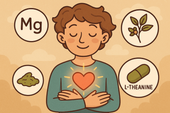
Supplements That Support Emotional Openness
Emotional openness starts in the body 🌿. When your nervous system feels safe, your heart can express freely. Learn how supplements like magnesium, Ashwagandha, and L-theanine support calm connection, balanced emotions, and the courage to stay authentically open.
-
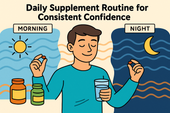
Daily Supplement Routine for Consistent Confidence
Confidence is built through rhythm, not luck 🌿. A daily supplement routine can help your energy, mood, and focus stay balanced from morning to night. Learn how adaptogens, magnesium, and B vitamins work together to create steady calm and lasting self-assurance.
-
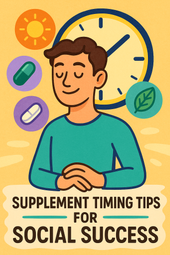
Supplement Timing Tips for Social Success
Social confidence has its own rhythm 🌿. When you time your supplements to match your body’s natural energy cycles, calm and focus align effortlessly. Learn how magnesium, L-theanine, and adaptogens can help you stay grounded, charismatic, and fully present at just the right moment.
-
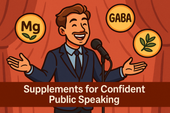
Supplements for Confident Public Speaking
Public speaking confidence begins with biology 🎤🌿. When your nervous system is calm and your neurotransmitters are balanced, your voice, focus, and presence flow naturally. Learn how supplements like magnesium, GABA, and adaptogens can align your body’s chemistry with the calm clarity you need to speak authentically.
-

Travel-Friendly Supplements for On-the-Go Confidence
Magnesium is the ultimate travel mineral for calm and balance ✈️🌿. It relaxes the nervous system, eases stress from jet lag or fatigue, and supports muscle and mental recovery. Discover how this essential nutrient keeps you centered, focused, and energized wherever your journey takes you.
-
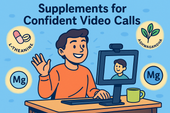
Supplements for Confident Video Calls
Magnesium is the mineral that brings calm to both body and mind 🌿. It supports relaxation, better sleep, and a stable mood by regulating cortisol and soothing the nervous system. Learn how magnesium supplements can restore balance, reduce anxiety, and help you feel centered under stress.
-

Ashwagandha for Calming the Stress Response
Ashwagandha helps your body remember how to relax 🌿. As one of the most trusted adaptogens, it calms the stress response by lowering cortisol, soothing the nervous system, and restoring natural energy balance. Learn how this ancient herb promotes deeper sleep, emotional steadiness, and resilience in today’s high-stress world.
-
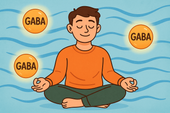
How GABA Supplements Can Help You Feel Grounded
GABA is the brain’s natural calm signal 🌿. When life feels overwhelming, this neurotransmitter helps quiet mental noise, relax muscles, and restore emotional balance. Learn how GABA supplements can calm the nervous system, reduce anxiety, and help you feel grounded in your body again.
-
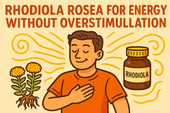
Rhodiola Rosea for Energy Without Overstimulation
Rhodiola rosea offers a rare kind of energy — one rooted in calm, not chaos 🌿. Known as the golden root, this adaptogen enhances endurance, focus, and mood by balancing cortisol and supporting the nervous system. Discover how Rhodiola restores natural vitality without the overstimulation of caffeine or stress-driven fatigue.
-
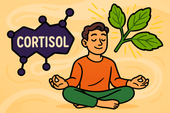
Holy Basil and Cortisol Control
Holy basil, or Tulsi, is one of nature’s most powerful adaptogens 🌿. Revered in Ayurvedic medicine for centuries, it helps balance cortisol, calm the mind, and protect the body from stress. Learn how holy basil restores hormonal harmony, supports energy, and promotes emotional resilience in a fast-paced world.
-
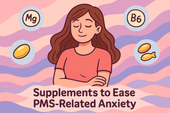
Supplements to Ease PMS-Related Anxiety
Hormones are the body’s messengers — guiding mood, energy, metabolism, and balance. 🌿 When these chemical signals flow in harmony, life feels stable and calm. Learn how nutrients, sleep, and stress management help keep hormonal communication clear, supporting emotional steadiness and overall vitality.
-
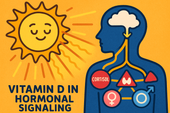
The Role of Vitamin D in Hormonal Signaling
Testosterone is more than a hormone — it’s a signal of strength, motivation, and vitality 💪. Learn how this key molecule shapes energy, mood, muscle growth, and focus in both men and women. Discover how nutrition, vitamin D, and minerals like zinc and magnesium support healthy testosterone signaling for balanced power and performance.
-
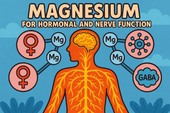
Magnesium for Hormonal and Nerve Function
Magnesium is the mineral that connects calm and vitality ⚡. It fuels nerve transmission, supports hormonal balance, and restores the body’s ability to relax under stress. Learn how magnesium strengthens communication between the nervous and endocrine systems, stabilizing cortisol, thyroid, and reproductive hormones for true equilibrium.
-

Zinc and Its Role in Hormonal Stability
Zinc is one of the body’s most powerful regulators ⚖️—a trace mineral that keeps hormones, metabolism, and energy in perfect rhythm. Learn how zinc supports testosterone, thyroid function, cortisol balance, and emotional stability while protecting against modern stress and deficiency. Discover why restoring zinc can help your body feel grounded, focused, and hormonally resilient.
-
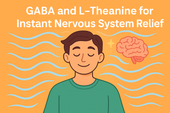
GABA and L-Theanine for Instant Nervous System Relief
When stress hits, your nervous system needs relief — not more stimulation 🌿. Discover how GABA and L-theanine work together to calm the body, quiet racing thoughts, and restore inner balance. Learn the science behind these natural compounds that ease tension, support emotional stability, and bring instant peace without sedation.
-
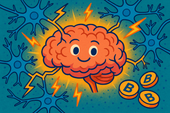
B-Vitamins for Faster Nerve Communication
Vitamin B1, or thiamine, is your brain’s ignition key 🔑—turning food into cellular energy and powering rapid nerve signaling. Discover how this essential nutrient fuels neurotransmitter activity, supports focus and coordination, and prevents fatigue or mental fog. Learn why maintaining optimal thiamine levels keeps your nerves firing fast and your mind sharp.
-

Supplements That Help You Stay Alert Without Anxiety
L-theanine is nature’s secret for calm focus and balanced energy 🌿. Found in green tea, this gentle amino acid promotes relaxation, supports alpha brain waves, and helps you stay alert without stress or grogginess. Discover how L-theanine can enhance focus, improve sleep quality, and restore mental calm in a fast-paced world.
-
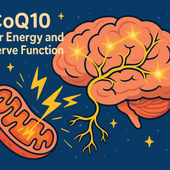
CoQ10 for Energy and Nerve Function
CoQ10 powers every cell in your body—from your heart to your brain ⚡. Learn how this essential compound fuels mitochondria, boosts nerve function, and protects your brain from oxidative stress. Discover how supplementing with CoQ10 can restore energy, sharpen focus, and support long-term neurological vitality.
-
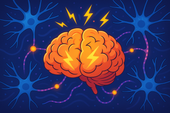
Supplements That Support Nerve Signaling for Mental Energy
Your brain’s electrical network depends on magnesium—one of the most vital minerals for nerve signaling, calm focus, and steady mental energy ⚡. Learn how this essential nutrient powers neurotransmission, supports relaxation, and helps protect your nervous system from stress overload—so your mind feels balanced, alert, and resilient every day.
-
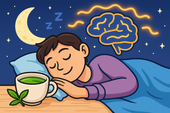
L-Theanine for Sleep Without Grogginess
L-theanine offers a natural path to better sleep—without the next-day fog. 🌙 Found in green tea, this gentle amino acid calms the mind, lowers stress hormones, and promotes deep relaxation without sedation. Learn how L-theanine balances your brainwaves, reduces nighttime anxiety, and helps you wake up refreshed, alert, and clear-minded.
-
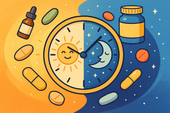
Supplements to Support the Circadian Rhythm
Your body’s natural clock depends on more than just sunlight—it also relies on key nutrients to stay in sync. 🌞🌙 Discover the best supplements to support your circadian rhythm, from melatonin and magnesium for deep sleep to vitamin D and adaptogens for morning energy. Learn how to realign your internal clock for better rest, sharper focus, and stable mood every day.
-
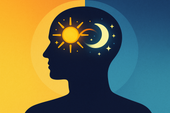
Melatonin and Cortisol: The Night vs. Day Hormones
Melatonin and cortisol are your body’s night-and-day hormones—one helping you drift into deep sleep, the other powering your alertness each morning. 🌙☀️ Learn how these two forces work together to regulate your energy, mood, and recovery. Discover how modern stress, artificial light, and poor routines can throw them off balance—and how to naturally reset your rhythm for calm nights and focused days.
-
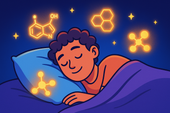
Supplements for Deeper Sleep and Nervous System Reset
Struggling to sleep even when you’re exhausted? 🌙 Discover how to reset your nervous system and achieve deeper, more restorative rest with the right blend of supplements, breathwork, and therapy. From magnesium and L-theanine to slow exhalations and somatic healing, this guide helps you rebuild your body’s natural rhythm of calm and recovery—so you can wake up truly renewed.
-
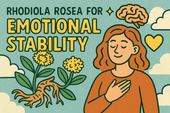
Rhodiola Rosea for Emotional Stability: Finding Balance Through Resilience
Stress is the body’s natural alarm system — useful in bursts, but draining when it never turns off. Learning to regulate it helps restore calm focus, emotional balance, and physical vitality. 🌿💫
-
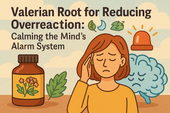
Valerian Root for Reducing Overreaction: Calming the Mind’s Alarm System
GABA is the brain’s natural brake pedal — calming overstimulation and helping you think clearly under stress. When balanced, it brings a sense of inner peace, emotional control, and focus. 🌿🧠💫
-

Supporting Adrenal Health for a Steadier Mood
Cortisol is the body’s built-in stress alarm — essential in short bursts but harmful when constantly elevated. Learning to balance it naturally restores calm, focus, and emotional stability. 🌿⚖️
-
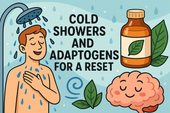
Cold Showers and Adaptogens for a Reset: Reclaiming Energy, Calm, and Control
Adaptogens help the body adapt to stress, restoring calm energy and balance. These ancient herbs strengthen resilience, regulate mood, and support focus — helping you stay grounded through life’s ups and downs. 🌿💫
-
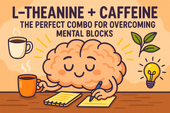
L-Theanine + Caffeine: The Perfect Combo for Overcoming Mental Blocks
Neurotransmitters are the brain’s messengers — tiny molecules that shape how we think, feel, and focus. When they’re in balance, we experience calm energy, clear thinking, and emotional harmony. 🌿🧠✨
-
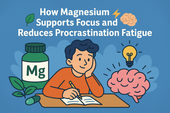
How Magnesium Supports Focus and Reduces Procrastination Fatigue
Magnesium is the quiet mineral behind mental clarity and steady focus. By calming the nervous system and restoring cellular energy, it helps transform fatigue and overthinking into calm, productive flow. 🌿⚡🧠
-

B Vitamins for Beating Procrastination and Boosting Energy
Procrastination isn’t just a mindset — it’s often a signal of low energy and nutrient depletion. B vitamins recharge the brain’s motivation circuits, boosting focus, clarity, and the drive to take action. 🌿⚡🧠
-
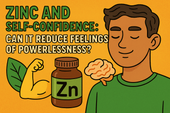
Zinc and Self-Confidence: Can It Reduce Feelings of Powerlessness?
Zinc isn’t just a mineral — it’s the foundation of emotional strength. By balancing neurotransmitters and calming the nervous system, it helps you feel more centered, assertive, and confident from the inside out. 🌿💪
-
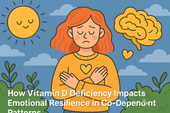
How Vitamin D Deficiency Impacts Emotional Resilience in Co-Dependent Patterns
Co-dependency is the emotional tug-of-war between connection and self-loss — a pattern born from giving too much and receiving too little. Learning to untangle this dynamic allows for real love rooted in balance, not fear. 🌿💛
-
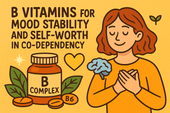
B Vitamins for Mood Stability and Self-Worth in Co-Dependency
Vitamin B1, or thiamine, powers both the body and the brain — fueling focus, energy, and emotional clarity. Supporting your nervous system with this essential nutrient helps restore calm and mental resilience. 🌿⚡🧠
-
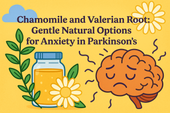
Chamomile and Valerian Root: Gentle Natural Options for Anxiety in Parkinson’s
Anxiety often feels like a storm inside the mind — racing thoughts, tightness, and unease that make it hard to focus or rest. But learning to understand and calm that inner storm opens the door to peace and emotional balance. 🌿🧠
-
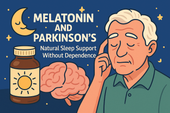
Melatonin and Parkinson’s: Natural Sleep Support Without Dependence
Melatonin is the body’s natural sleep hormone — guiding your mind into rest and your body into recovery. Supporting its natural rhythm can improve sleep quality, mood, and overall health without dependence. 🌙🧠
-
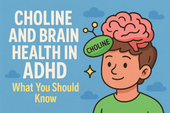
Choline and Brain Health in ADHD: What You Should Know
Inflammation can quietly affect both the body and mind, disrupting focus, mood, and energy. Understanding how it works — and how to calm it — is key to restoring balance, clarity, and long-term health. 🌿🧠
-
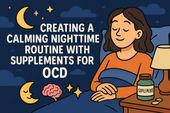
Creating a Calming Nighttime Routine with Supplements for OCD
Sleep is the brain’s nightly repair ritual — a time when emotional chaos settles and clarity returns. Prioritizing deep rest restores focus, calm, and resilience, helping both the body and mind recover naturally. 🌙🧠
-
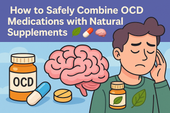
How to Safely Combine OCD Medications with Natural Supplements
Supplements bridge the gap between nutrition and mental wellness — supporting focus, calm, and energy from within. The right combination of nutrients can help balance mood, sharpen the mind, and restore long-term resilience. 🌿🧠
-
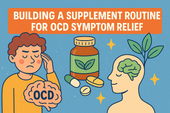
Building a Supplement Routine for OCD Symptom Relief
OCD can feel like being trapped in your own thoughts — a battle between control and chaos. Understanding the science behind these cycles is the first step toward breaking free and finding calm within the mind. 🌿🧠
-

Curcumin and Brain Inflammation in OCD: Can It Help?
Inflammation doesn’t just affect the body — it can silently influence the brain, fueling anxiety, fatigue, and mental fog. By understanding how inflammation works, we can learn how to calm the nervous system and restore inner balance. 🌿🧠
-
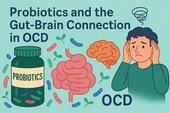
Probiotics and the Gut-Brain Connection in OCD
Serotonin, often called the “feel-good” chemical, shapes our mood, focus, and emotional balance. By keeping this neurotransmitter in harmony, we support calm thinking, better sleep, and greater mental resilience. 🌿🧠
-

B Vitamins and OCD: Supporting Energy and Neurotransmitter Balance
OCD isn’t just about habits — it’s about the brain’s struggle to find control in chaos. Understanding the neurological roots behind intrusive thoughts can help replace fear with clarity and guide healing toward calm awareness. 🌿🧠
-
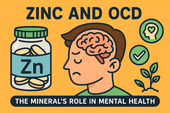
Zinc and OCD: The Mineral’s Role in Mental Health
Zinc is more than a trace mineral — it’s a key regulator of mood, memory, and emotional balance. By stabilizing neurotransmitters like serotonin and glutamate, zinc helps calm obsessive thought patterns and supports overall mental clarity. 🌿🧠
-
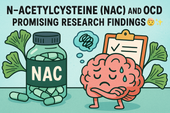
N-Acetylcysteine (NAC) and OCD: Promising Research Findings
Antioxidants act as the body’s natural defense system, neutralizing free radicals that damage brain cells and worsen anxiety or fatigue. Supporting antioxidant balance with nutrition and supplements helps protect focus, memory, and emotional stability. 🌿🧠
-
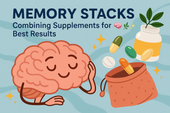
Memory Stacks: Combining Supplements for Best Results
Memory weaves the story of who we are — connecting past, present, and future through every experience we store and recall. Strengthening memory means nurturing the brain’s energy, balance, and emotional calm so learning becomes effortless. 🌿🧠
-
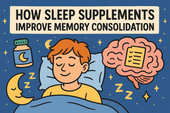
How Sleep Supplements Improve Memory Consolidation
Stress can cloud thinking, disrupt sleep, and weaken memory — but understanding its effects on the brain is the first step toward calm. By learning to regulate the nervous system, we can protect focus, energy, and emotional balance. 🌿🧠
-
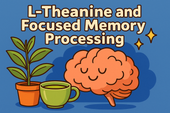
L-Theanine and Focused Memory Processing
Science is the art of curiosity and precision — a quest to understand the unseen patterns that shape life. From molecules to galaxies, every discovery begins with observation, imagination, and the courage to ask “why.” 🔬💡
-
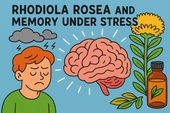
Rhodiola Rosea and Memory Under Stress
Stress clouds memory, slows thinking, and drains energy — but the good news is, the brain can recover. By understanding how stress affects focus and emotion, we can learn to regulate it, restore clarity, and protect long-term cognitive health. 🌿🧠
-
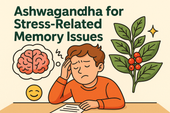
Ashwagandha for Stress-Related Memory Issues
Adaptogens are nature’s answer to modern stress. These powerful herbs — like Ashwagandha, Rhodiola, and Holy Basil — help balance cortisol, support calm focus, and strengthen the body’s resilience, bringing the mind back to harmony. 🌿🧘♀️


















































